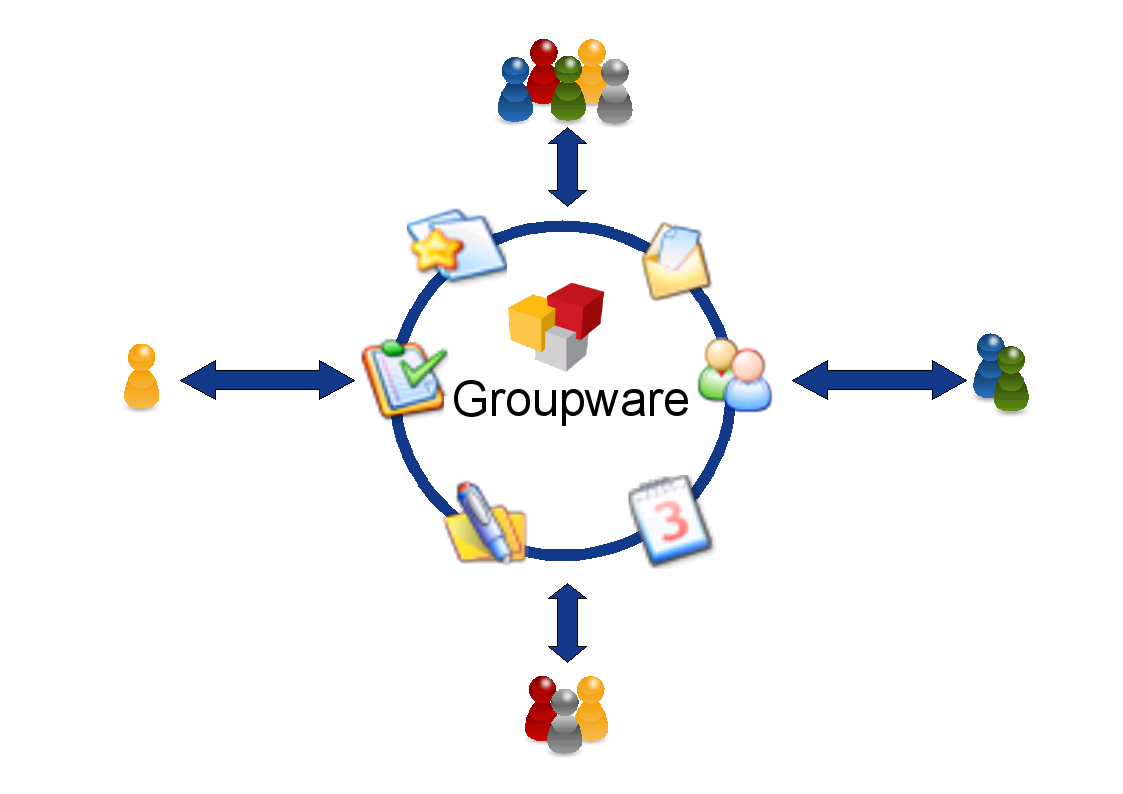Groupware, the foundation of modern collaboration, has evolved from its humble beginnings to become an indispensable tool for teams and organizations. From early email systems to sophisticated cloud-based platforms, groupware has revolutionized the way we work, fostering communication, streamlining workflows, and ultimately driving productivity.
Table of Contents
This comprehensive guide explores the various types of groupware, their benefits, key features, and best practices for effective implementation. We’ll delve into the crucial considerations for selecting the right solution, navigating the complexities of adoption, and harnessing the power of groupware to optimize remote work and future trends.
Definition and History of Groupware

Groupware refers to software applications designed to facilitate collaboration and communication among individuals within a group or organization. It encompasses a wide range of tools and technologies that enable shared workspaces, real-time communication, and streamlined workflows.
Groupware has evolved significantly over the years, from its early beginnings as simple electronic mail systems to sophisticated cloud-based platforms offering a comprehensive suite of collaboration tools.
Early Forms of Groupware
Early forms of groupware emerged in the 1970s and 1980s, primarily focusing on electronic mail (email) and bulletin board systems (BBS). Email allowed for asynchronous communication, enabling individuals to send and receive messages at their convenience. BBS provided a platform for online discussions and file sharing, fostering a sense of community among users.
- Email: One of the earliest forms of groupware, email revolutionized communication by enabling individuals to send and receive messages electronically. Early email systems were primarily text-based, but they paved the way for more advanced features like attachments and multimedia support.
- Bulletin Board Systems (BBS): BBS emerged as online forums where users could post messages, share files, and engage in discussions. These systems played a crucial role in fostering online communities and early forms of collaboration.
These early forms of groupware laid the foundation for the development of more sophisticated collaboration tools. The impact of these early applications was significant, enabling communication and information sharing across geographical boundaries and fostering a sense of community among users.
Types of Groupware

Groupware, in its various forms, plays a crucial role in facilitating collaboration and communication within organizations. By understanding the different types of groupware and their functionalities, you can effectively leverage these tools to enhance productivity and achieve common goals.
Classification of Groupware
Groupware can be broadly classified based on their functionalities. These categories are not mutually exclusive, as many groupware solutions offer a combination of features.
| Name | Description | Features | Examples |
|---|---|---|---|
| Email is a fundamental communication tool that allows individuals to exchange messages electronically. |
|
Gmail, Outlook, Yahoo Mail | |
| Instant Messaging | Instant messaging (IM) enables real-time text-based communication between individuals or groups. |
|
Slack, Microsoft Teams, WhatsApp |
| Video Conferencing | Video conferencing allows individuals to hold virtual meetings with audio and video capabilities. |
|
Zoom, Google Meet, Skype |
| Document Sharing | Document sharing platforms allow users to collaborate on documents, spreadsheets, presentations, and other files. |
|
Google Docs, Microsoft Office 365, Dropbox |
| Project Management Tools | Project management tools help teams plan, organize, and track projects. |
|
Asana, Trello, Jira |
| Workflow Management Systems | Workflow management systems automate business processes and streamline tasks. |
|
Salesforce, Zoho Flow, Nintex |
| Knowledge Management Systems | Knowledge management systems facilitate the creation, sharing, and preservation of organizational knowledge. |
|
Confluence, SharePoint, Google Drive |
| Group Calendars and Scheduling | Group calendars and scheduling tools enable teams to manage appointments, meetings, and events. |
|
Google Calendar, Outlook Calendar, Microsoft Teams |
| Discussion Forums | Discussion forums provide a platform for online discussions and knowledge sharing. |
|
Reddit, Stack Overflow, online community forums |
| Web Conferencing | Web conferencing combines video conferencing with online collaboration tools, allowing participants to share documents, presentations, and whiteboards. |
|
GoToMeeting, WebEx, Adobe Connect |
Final Conclusion
In conclusion, groupware is more than just a collection of tools; it’s a powerful engine for collaboration, innovation, and growth. By embracing the right groupware solutions, organizations can unlock new levels of efficiency, enhance team performance, and achieve remarkable business outcomes. As technology continues to advance, groupware will undoubtedly play an even more pivotal role in shaping the future of work.
Groupware can be a powerful tool for collaborative projects, especially when dealing with technical aspects like design. For example, a team working on a construction project might use groupware to share and edit AutoCAD drawings in real-time, ensuring everyone has access to the latest revisions and reducing the potential for errors.
This seamless collaboration can streamline the entire design process and improve overall efficiency.
